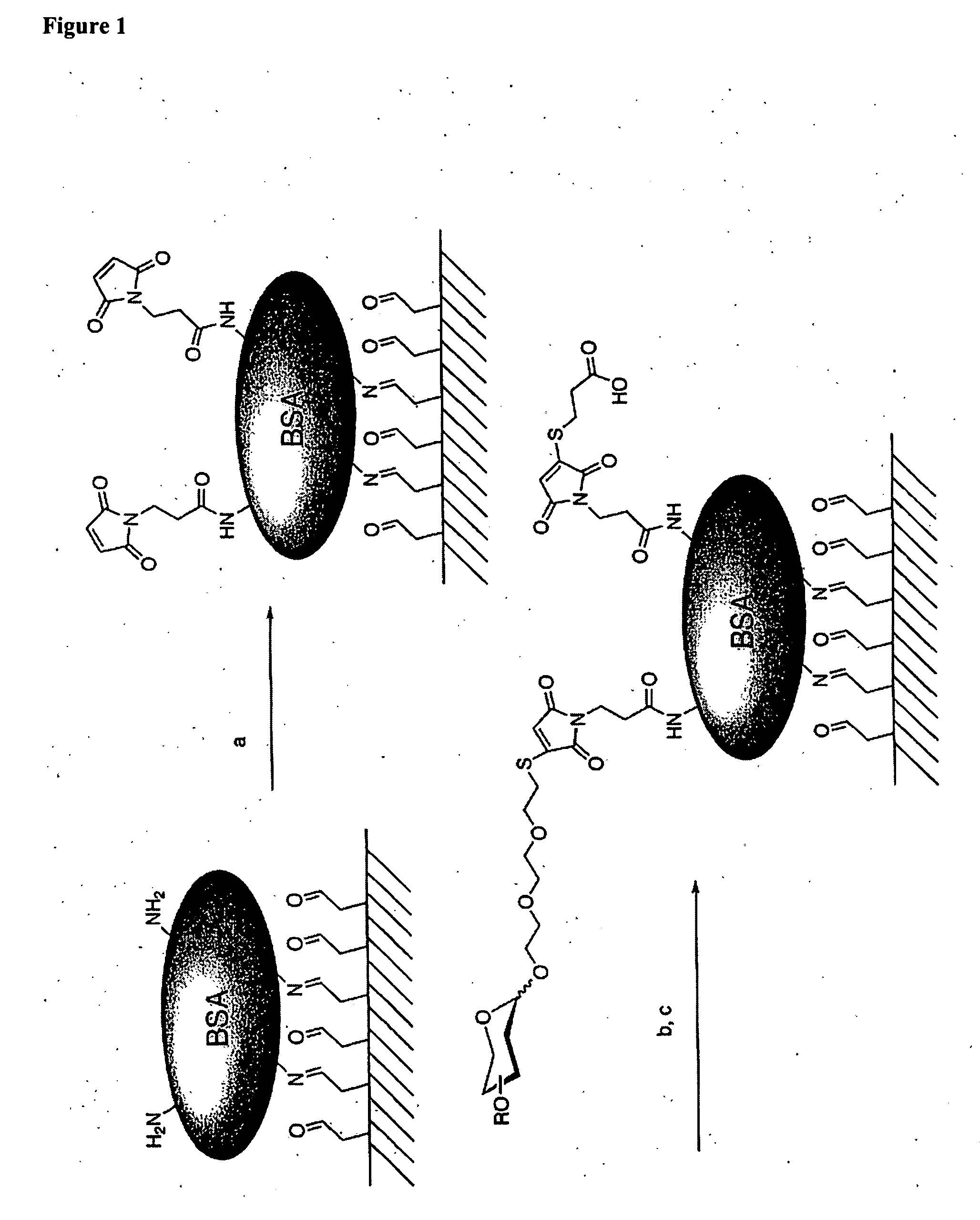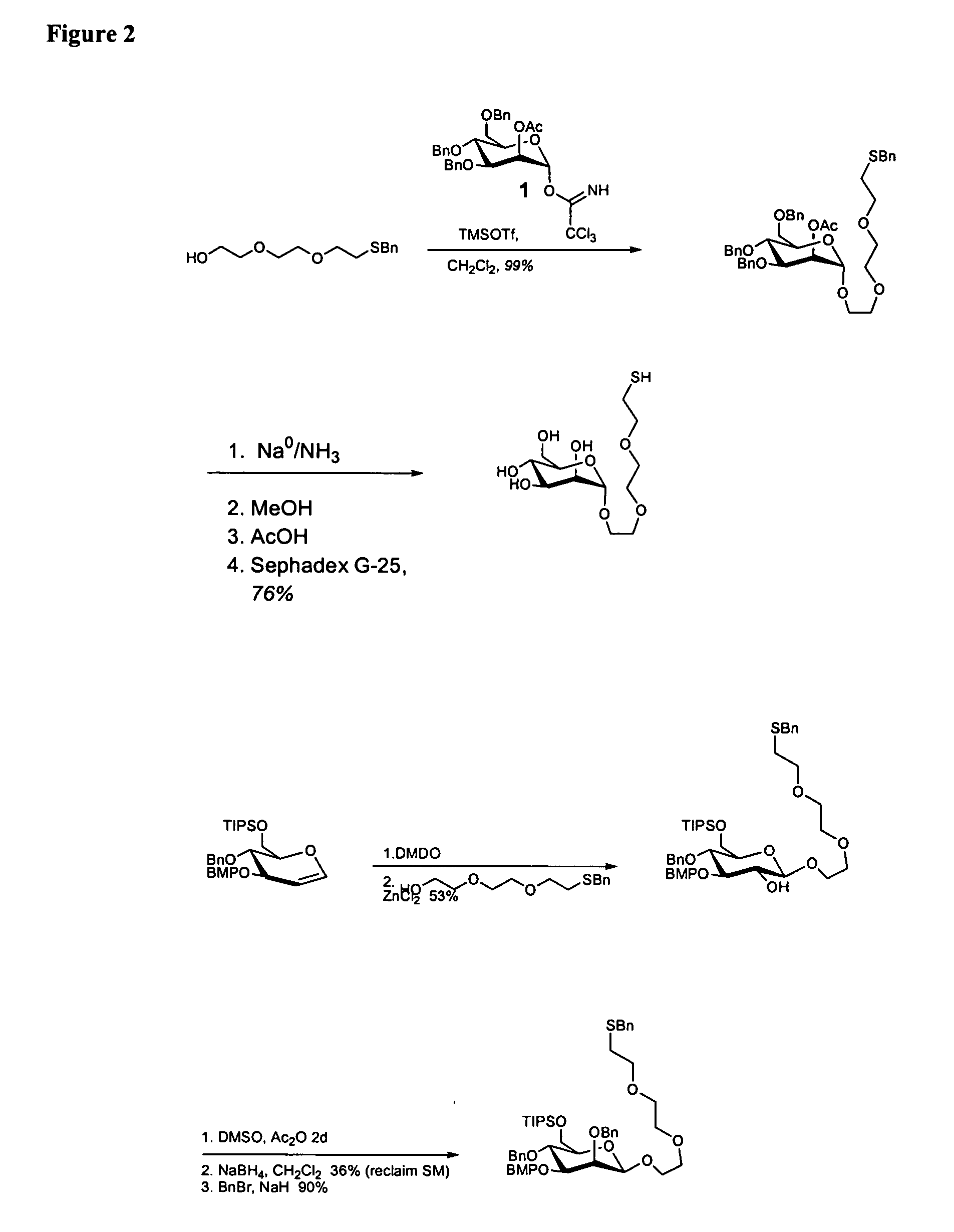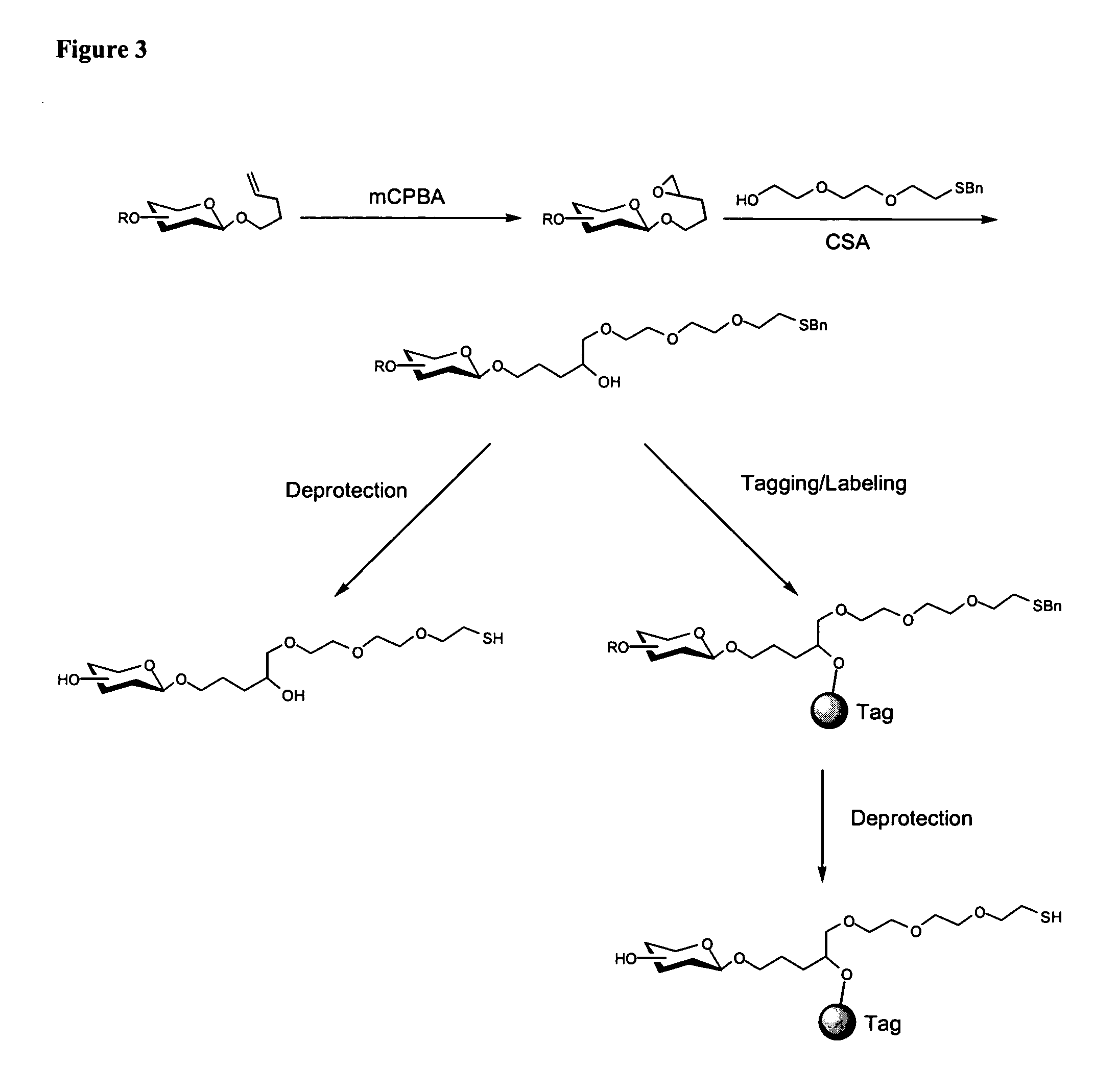Microarrays and microspheres comprising oligosaccharides, complex carbohydrates or glycoproteins
a technology of complex carbohydrates and microspheres, which is applied in the direction of oligosaccharides, transferases, instruments, etc., can solve the problems of inability to study, affecting the effect of the current substrate binding experiment, and often hampered research in this area, so as to achieve efficient conduct and reduce waste
- Summary
- Abstract
- Description
- Claims
- Application Information
AI Technical Summary
Benefits of technology
Problems solved by technology
Method used
Image
Examples
example 1
Detection of Monsacharides by Concanavalin A and Erythrina Cristagalli
[0201] Protein-carbohydrate interactions were examined using the mannose / glucose specific lectin Concanavalin A (ConA). Microarrays were constructed through the maleimide derivatization of BSA coated glass slides to create a thiol-reactive surface (FIG. 1). Thiol derivatized mannose and galactose were printed as 120 μm spots using a microarray printing robot. The remaining maleimide groups were subsequently quenched with a solution of 3-mercaptopropionic acid to render the slides unreactive to cysteine containing proteins. The carbohydrate microarrays were incubated with a solution of FITC-labeled ConA. The arrays were thoroughly rinsed with buffer, dried by centrifugation and scanned with a fluorescence slide scanner. As anticipated, FITC-labeled ConA was observed on the spots corresponding to immobilized mannose, while no fluorescence was associated with the galactose spots (FIG. 5). This result confirms that ...
example 2
Immobilization and Binding Analysis of Proteins, Neoglycoproteins, and Glycoproteins
[0209] Functionalization of slides: Corning GAPS II amino propyl silane treated slides were immersed in 50 mLs anhydrous DMF containing 100 mM N,N-Diisopropylethylamine base and 10 mg bis-succinimidyl ester tetraethylene glycol (FIG. 10) and incubated overnight at room temperature. The slides were rinsed three times with 95% ethanol (50 mL) and then dried under a stream of dry Ar. Slides were then stored in a vacuum dessicator until used for microarray fabrication.
[0210] Microarray fabrication: Proteins, neoglycoproteins, and glycoproteins were printed at high density on functionalized glass slides using a MicroGrid TAS array printer. Prints were performed at 30% humidity using either a 16-pin or 32-pin format, with a spot size of 120 μm and a distance of 300 μm between the centers of adjacent spots. Thereafter the slides were stored in a humid chamber at room temperature for 12 hours, washed 2 ti...
example 3
Carbohydrate Binding Experiments Using Fiber Optic Microsphere Arrays
[0212] To demonstrate the utility of such arrays for studying protein-carbohydrate interactions, we examined two model systems, the mannose binding lectin Concanavalin A (ConA), and cyanovirin N (CVN), a novel HIV-inactivating 11 kDa protein derived from the cyanobacterium Nostoc ellipsosporum with demonstrated specificity for high-mannose oligosaccharides M. Boyd et al. Antimicrobial Agents and Chemotherapy 1997, 41, 1521.
[0213] Mannose 1 and galactose 2 monosaccharides-were prepared with an ethylenedioxy thiol-terminated linker at the anomeric center (FIG. 6). Each monosaccharide was coupled to commercially available maleimide-activated bovine serum albumin (BSA). The prepared neoglycoproteins were then attached to encoded microspheres with a water soluble carbodiimide and used to form a randomly ordered fiber optic microsphere array. ConA binding was detected by incubating the fiber optic array in a solution ...
PUM
| Property | Measurement | Unit |
|---|---|---|
| diameter | aaaaa | aaaaa |
| diameter | aaaaa | aaaaa |
| diameter | aaaaa | aaaaa |
Abstract
Description
Claims
Application Information
 Login to View More
Login to View More - R&D
- Intellectual Property
- Life Sciences
- Materials
- Tech Scout
- Unparalleled Data Quality
- Higher Quality Content
- 60% Fewer Hallucinations
Browse by: Latest US Patents, China's latest patents, Technical Efficacy Thesaurus, Application Domain, Technology Topic, Popular Technical Reports.
© 2025 PatSnap. All rights reserved.Legal|Privacy policy|Modern Slavery Act Transparency Statement|Sitemap|About US| Contact US: help@patsnap.com



